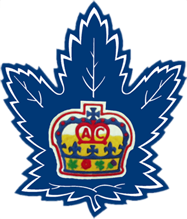 Written by Paul Lewicki
Written by Paul Lewicki
It was in the late 1800’s that local businessman and sportsmen Mr. John Earls decided to form a new athletic club in downtown Toronto. The name he chose was “The Toronto Marlborough Athletic Club”.
Mr. Earls, the first ever president of the young club will indeed go down in history as the “Father” of Marlboro hockey. He could never have imagined at the time what a storied franchise his new club would become.
John Earls was born in Ireland and emigrated to England when he was seven years old. Having been educated and brought up there the family eventually emigrated to Canada in 1854. Upon arriving in Canada he enrolled in architecture but his future and life long passion would be in the budding railway industry. After starting as an assistant to the President of the Grand Trunk Railway in 1864 he quickly moved up the ranks before being appointed the head of all rail business for the GTR covering an area from Toronto to the Vancouver shores. Mr. Earles was also very active in the community as a trustee of the Methodist Church as well as President of the Toronto Philharmonic.
His wife - Sarah Jane Cheffey Earls - was a direct descendant of King Robert the First of Scotland – also known as “Robert the Bruce”. This adds yet another layer of royalty in tracing the Marlboro’s early history
Also of note, two of their three sons - “Lal” and “Jack” - were both members of the Marlboro’s 1902 “OHA” Junior Championship team.
Founding the Toronto Marlboro Athletic Club to participate in a wide variety of sports was just another crowning achievement in his storied career.
The club was named after a long line of English Noblemen, the Dukes of Marlborough. The Dukes family name was Churchill, and in fact, the VIII Duke of Marlborough was an uncle to the legendary British Prime Minister Sir Winston Churchill.
Through the years the Churchill name had become synonymous with leadership, courage and their ability to rise to the challenge in times of adversity. In short, the Churchills provided the perfect role model for the young club.
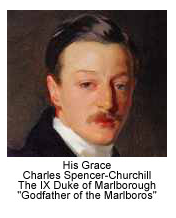 It was then club secretary Fred Waghorne who wrote to the IX Duke of Marlborough, Charles Spencer-Churchill, in England, for permission to use the storied name and crest.
It was then club secretary Fred Waghorne who wrote to the IX Duke of Marlborough, Charles Spencer-Churchill, in England, for permission to use the storied name and crest.
In choosing its logo the club took the Marlborough family crown and added the initials “A.C.” for Athletic Club. It wasn’t until the late 1950’s that the crown was set against the present day Maple Leaf.
This historical background of the name also lead to its teams being nicknamed “The Dukes”.
There is concrete evidence of the club having participated in baseball, football, lacrosse and boxing dating back to the late 1880’s. An article in the April 23, 1888 edition of the Globe and Mail shows the football schedule for the upcoming weekend including the Marlboro entry in the Toronto Junior Football League.
At the time The Marlboro Athletic Club maintained its headquarters in an office at 192 Spadina Avenue in Downtown Toronto.
As was common with athletic clubs of that era the Marlboro players were “multi-sport athletes” with the same faces competing for the club in several sports on the athletic calendar.
In the late 1890’s organized hockey was a loosely organized affair. For young players of the time actual games were limited to one off challenges between neighbouring churches and schools.
The one exception was the Toronto Lacrosse Hockey League. While the league operated three divisions of competition – Senior men’s (Open), Intermediate (Open) and Junior (18 and under) it would be the latter category that the first ever Marlboro hockey team would be entered in the 1899-1900 season. With players ranging from 14 – 18 years old it was not only the beginning of the clubs illustrious history, but its first ever “minor” team as well.
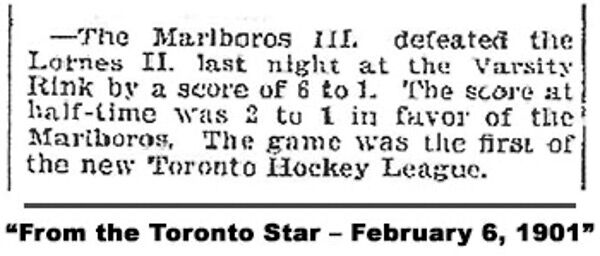
Hockey season in those days would start in late December or early January. All the ice surfaces, including those indoors, were made of natural ice and depended heavily on the weather conditions of the day.
The Dukes went on to win the Junior Division of the Toronto Lacrosse Hockey League in 1900 – 1901 in what would be the first ever championship for the young club. The Junior Division was the TLHL’s first “minor hockey division” with players ranging from 14 through 18 years old.
It was common in these early years for organizations to field more than one team in a particular age group. The Marlboros also competed in the first incarnation of the Toronto Hockey League (THL) in that same 1900 -1901 season.
In fact the young club participated in the first ever THL game – a 6-1 victory over the Toronto Lorne's on Wednesday, February 6, 1901 at the original Varsity Arena.
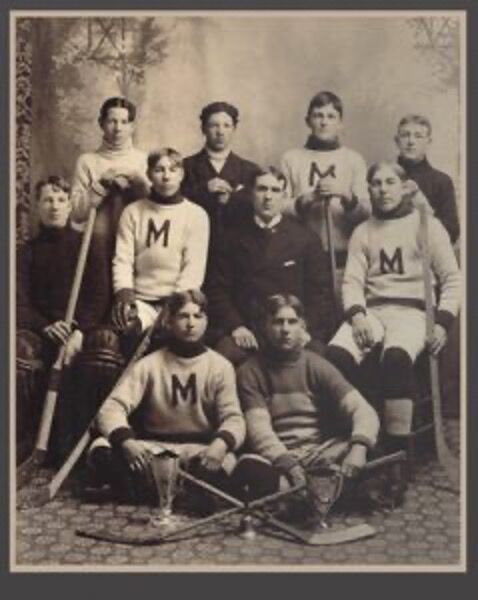
The following season the Marlboros entered both Junior and Senior teams in the Toronto Lacrosse Hockey League with the 1901 – 1902 Senior’s emerging victorious at season’s end.
In 1902 – 1903 the club entered a Junior team in the much stronger OHA for the first time and walked away with the crown, defeating Kingston in that initial championship final. The club also entered an intermediate team in the OHA, winning the Toronto area group before losing in the provincial finals.
These titles were followed up with Senior OHA championships in 1903 – 1904 and 1904 – 1905. The former having moved on challenge the famed “Ottawa Silver Seven” for the Stanley Cup, losing in a two game total goal series, while the latter defeated Smiths Falls for the provincial title the next year.
While the club continued to operate both Junior, Intermediate and Senior teams in the early 1900’s it wasn’t until 1927 that the Marlboro name really came to the fore.
It was during this year that the late Conn Smythe bought the N.H.L.’s “Toronto St. Pats” and changed their name to the now famous “Maple Leafs”. Smythe realized the importance of a strong farm system and eventually made the Marlboros part of the Leaf organization.
In the beginning both the Leafs and Marlboros practiced and were headquartered out of the old Ravina Gardens in Toronto’s west end. Their games were played downtown at the Mutual Street Arena.
The 1929 season saw the Marlboro Juniors win their first Memorial Cup. Before the juniors were disbanded following the 1988-89 season, the club would have won a record seven Memorial Cups (Canadian Junior Champions) and have sent in excess of 250 players and coaches to the N.H.L. ranks.
With minor hockey starting to become a more organized affair and the Toronto Hockey league (THL) now offering competition in four older age groups the Marlboros added to its stable of teams – for the first time adding a Bantam team for the 1931-32 season. This coincided with the opening of the new “Maple Leaf Gardens” where the young Marlboro teams would practice in the early morning before school. The new entry would capture the T.H.L. Bantam crown and went on to win the Midget “A” title the next year. The early years would also see the young Marlboro clubs practicing and playing on local outdoor rinks with natural ice, as long as Mother Nature co-operated!
On May 28, 1937 the original “Hot Stove Club” was formed at Maple Leaf Gardens with a mandate to raise funds in support of the Marlborough Hockey Club and amateur sports in general. It wasn’t until 1963 that the Hot Stove Club was given a permanent home with premises and a restaurant at Maple Leaf Gardens.
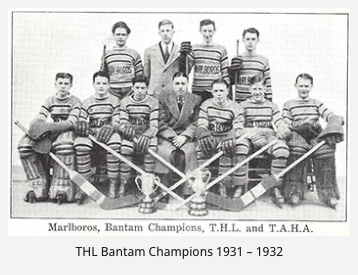 For the Marlboro franchise the eight year period between the 1933 – 1934 and 1940 – 1941 seasons would prove to be a test for the clubs actual existence. With the clubs owners Major Conn Smythe and W.J. D’Alesandro locked in a lengthy court battle over ownership, the clubs name and crest were frozen by the courts. During this period the Marlboro teams would be forced to play under different names including West Toronto Nationals, Toronto Dukes and “The Maple Leaf Imps AC” – winners of three Minor Bantam titles in a row. It wouldn’t be until the 1941-1942 season that Major Smythe would emerge victorious, the name was finally restored and the club resumed business under its legendary name and crest. Seven years later in 1948-49 the Pee Wee team made its first appearance. Sponsored by the “Shopsy’s Food Company” that year the Pee Wee’s went on to win 8 T.H.L. championships in the next 14 years.
For the Marlboro franchise the eight year period between the 1933 – 1934 and 1940 – 1941 seasons would prove to be a test for the clubs actual existence. With the clubs owners Major Conn Smythe and W.J. D’Alesandro locked in a lengthy court battle over ownership, the clubs name and crest were frozen by the courts. During this period the Marlboro teams would be forced to play under different names including West Toronto Nationals, Toronto Dukes and “The Maple Leaf Imps AC” – winners of three Minor Bantam titles in a row. It wouldn’t be until the 1941-1942 season that Major Smythe would emerge victorious, the name was finally restored and the club resumed business under its legendary name and crest. Seven years later in 1948-49 the Pee Wee team made its first appearance. Sponsored by the “Shopsy’s Food Company” that year the Pee Wee’s went on to win 8 T.H.L. championships in the next 14 years.
Other highlights include the Marlborough Midgets winning 11 T.H.L. titles in 13 years including a record 8 straight championships and the Marlboro Minor Midgets winning an impressive 17 league titles in a 20 year period between 1948-1949 and 1967-1968..
Up until the N.H.L. instituted the present entry draft in 1967 the Maple Leaf organization through its Marlborough minor system could virtually groom players from as young as nine years old to work their way through the minor system, to the Junior “A’s” and ultimately to the Leafs. Needless to say, this process laid the foundation for many Leaf Stanley Cup teams and produced a long line of legends ranging from Joe Primeau and Busher Jackson in the 1930’s, to “Hockey Night in Canada’s” Frank Selke Jr. in the 1940’s, Bob Pulford, Bob Nevin, Carl Brewer and Billy Harris in the very successful 1960’s, and players such as Mike Palmateer and Mark Napier in the 1970’s.
Over the years the club also developed a long line of legendary executives, coaches and managers.
The original executive of the late 1800’s started with founding first President John Earls, club Secretary F.C. Waghorne and then club Manager William Smith.
As the 20th century began the leadership was passed on from father to son as J.C. Earls was named President and was assisted by Executive members H.S.B. Leslie, G.L. Vivian, E.Marriott, R.J. Burns, T. Harmon, A.H. Birmingham, F.St. Leger. and T.A. Welch.
As the club moved into the 1920’s and 1930’s a new breed of executive burst onto the scene including legendary names Frank Selke Sr., Jack Sinclair, W.F. Christie, Art Halliwell, W.J. D’Alesandro, W.G. Campbell, David Garrity, Cecil Shaw and Frank Ayerst.
The 1940’s saw noted hockey men such as Jimmy Garlick, Robert Dalzell, George Hosking, John Smith, Ed Hosking, Matthew Sayliss F.S. Livingstone, B.H. Hawker, Don Wilson and a young Harold Ballard leading the way.
The very successful run of the 1950’s included an illustrious group including Nev Hewitt, Charles McDonald, future Leafs owner Stafford Smythe, Jack White, P. Powell, John Screen, Jas Young, Ian Standing and the Legendary A.J “Buck” Houle at the helm.
The equally strong teams of the 1960’s were lead by such familiar names as Jim Gregory, Jack White, George Legge, Robert Smith, Vic Sluce, Bob Park, Curly Davies and Bill Mulligan.
Moving into the 1970’s names such as Trevor Shilston, Paul Mcnamara, Peter Bourke and Peter Foreman took the reins.
The 1980’s would bring yet another new group of names to the fore including Gerry Wilks, Ken Martin, Terry Weir, Gord Gwynne and future Leafs development coach Paul Dennis.
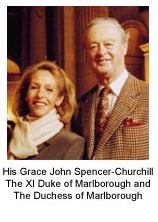
The most successful regime in Marlboro history was the executive committee made up of Jim Nicoletti, Mike Chraba, Lynn Dennis, Al Findlay, Nick Halavonja, Domenic Sculiia, John Cottrell and Paul Lewicki. Working together from 1984 through the end of the 2021 season the group guided it’s teams to a record 75 GTHL titles and 14 All Ontario crowns.
Following the disbanding of the Junior “A’s” in 1989 the Maple Leafs discontinued it’s direct sponsorship of the minor system, but through the permission of then Maple Leaf owner Harold Ballard the Minors were allowed to retain and carry on the Marlborough name.
The 2000 – 2001 season saw the club celebrate the 100th anniversary of its first official season and during that year the club made two significant presentations in celebration of its roots. Specially designed framed logo plaques were presented to both John Spencer-Churchill the XI “Duke of Marlborough” and to “Marlborough House” in England which was the official home to the Marlborough family before moving to their present home at Blenheim Palace in Woodstock just north of London.
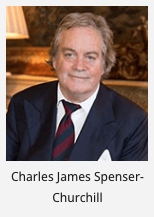 The current Duke of Marlboro is Charles James Spencer-Churchill, the 12th Duke of Marlborough. The title was passed down to him upon the death of his late father in 2014.
The current Duke of Marlboro is Charles James Spencer-Churchill, the 12th Duke of Marlborough. The title was passed down to him upon the death of his late father in 2014.
Recent years have seen the Marlboro Hockey Club retain it’s stature as the “premier” minor hockey organization in the country, sending a steady stream of players on to the O.H.L and University ranks as well as producing some of the N.H.L.’s current bright young stars including Jason Spezza of the Dallas Stars, Rick Nash of the New York Rangers, John Tavares of the New York Islanders and Connor McDavid of the Edmonton Oilers.
A lot has changed over the years including shortening the spelling of the name, but some things remain the same: the colours, the crest, and the proud tradition that goes with being a Marlboro.